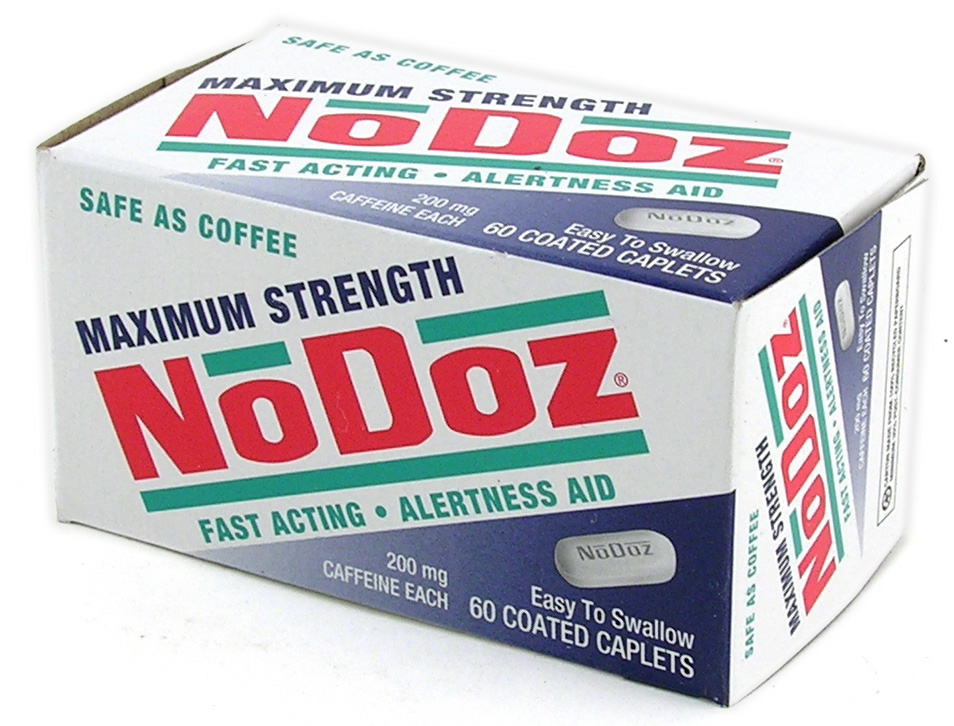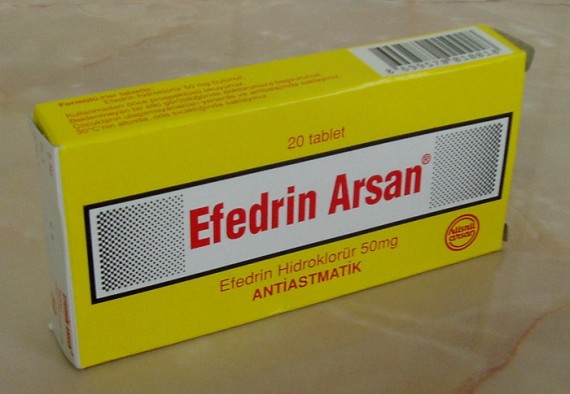
Dear Lyle,
Can you give me a brief rundown on the Ephedrine/Caffeine/Aspirin stack I keep hearing so much about? The guys at my gym tell me it’s great for fat loss but I’ve also seen stories in the media that it can be dangerous. What’s the deal? Also I’ve seen some suggest yohimbe for fat loss. Is it safe to take yohimbe with ephedrine?
Ephedrine belongs to a class of compounds which are generally called beta-agonists. To understand what this means, we have to look at a little physiology. Tissues in the body (i.e. muscle cells, heart cells, fat cells) contain both beta receptors and alpha receptors. Without getting into nasty details, there are at least three types of beta receptors (called Beta-1, Beta-2, and Beta-3) and two types of alpha receptors (called Alpha-1 and Alpha-2). Beta receptors tend to stimulate things like calorie burning, fat breakdown and heart rate. I have described them in the past as being like accelerators in that they accelerate certain metabolic systems. By contrast alpha receptors are like brakes, slowing those same systems.
Schematically we can show this as:
Net effect = beta receptors – alpha receptors
Take fat mobilization for example. When beta receptors are stimulated (for example by adrenaline) it sends a signal to the fat cell to breakdown Triglycerides to Free Fatty Acids (FFA) + Glycerol. The FFA enter the bloodstream where they can be picked up by muscle or heart and be burned for energy. When alpha receptors are stimulated, they send the cell a signal NOT to breakdown triglycerides.
So where does ephedrine fit into all of this? Ephedrine is a beta-agonist meaning that it stimulates the beta-receptors of cells. Additionally ephedrine signals the body to release adrenaline and noradrenaline (also called epinephrine and norepinephrine depending on what side of the Atlantic you’re on) which also stimulate beta-receptors.
When this occurs many processes are kicked into action. Fat breakdown increases, muscles being burning more calories, and heart rate and blood pressure go up. All of these processes being mediated by beta-receptors. This is how ephedrine helps with fat loss. It raises caloric expenditure (by stimulating muscles to burn more calories) as well as increasing fat breakdown.
So what about the caffeine and aspirin? In general, the body doesn’t like change. This is why metabolism will slow down when you try to diet by lowering calories. By the same token, when you use ephedrine to stimulate metabolic rate and fat burning, the body mobilizes a variety of other processes (such as prostaglandins) to bring things back to normal. Caffeine and aspirin help to prevent the body from adapting to the ephedrine. Additionally, they allow less ephedrine to work more effectively (i.e. they work synergistically) which is important in terms of side effects. As mentioned above, in addition to it’s fat burning effects, ephedrine can also increase heart rate and blood pressure which is where the possibility of danger occurs. Someone who had pre-existing heart conditions (or high blood pressure) could conceivably get into problems by taking too much ephedrine. And most of the publicized deaths have been in individuals taking far more than the recommended dosage. I knew a girl who took 10 times the recommended dose of ephedrine one time (I have no idea why she did this) and ended up in this hospital. Thing is, taking 10 aspirin would be equally as bad. So it’s not that ephedrine, used at the proper dose, is necessarily dangerous. But like any drug, abusing it and taking more than the proper dose can get you into problems.
So what is the proper dose? Numerous studies have established that 20 milligrams of ephedrine with 200 mg of caffeine works better than other doses. That is, caffeine should be 10 times the dosage of ephedrine. One study I’m aware of used 30 mg of ephedrine with 300 mg of aspirin but most people seem to think that this much aspirin is not necessary. As well, since the ECA stack is generally taken three times a day, taking this much aspirin could cause problems (like ulcers). Most take either 150 mg of aspirin (just break a whole aspirin in half) or get the 81 mg baby aspirins.
So the basic ECA stack, which would be taken three times a day would consist of: 20 mg ephedrine 200 mg caffeine 81 mg of aspirin
Note that many companies prefer to use the herbal equivalents (which are ephedra/MaHuang, guarana or kola nut, and white willow bark respectively). It’s important in this case to make sure that the herbs are standardized to give the same dose each time. That is, one popular brand of herbal ECA provides 334 mg of ephedra standardized for 6% ephedra. 334 * 0.06 = 20 mg ephedra, the proper dose. Personally, I refuse to buy any herbal supplement that doesn’t list the standardization of it’s herbs since there’s just no way to know how much you’re getting. There is some debate over whether white willow bark (supposedly a natural form of aspirin) works as well as aspirin. As well the studies show that aspirin has more of an effect in obese individuals than in lean individuals. Finally, aspirin *may* cause problems with testosterone synthesis by blocking prostaglandin production.
What about side effects? The major side effects from the ECA stack are just a general stimulant effect. The first time I took ECA, I made the mistake of taking it around 8pm. I think I finally fell asleep around 4am the next morning. Some people are more affected by ECA’s stimulant properties than others. The best recommendation I can give is to start with 1/2 the recommended dose once per day. After 2 days, move up to a full dose taken first thing in the morning. As long as that doesn’t over-stimulate you, you can gradually increase to three doses per day with the last one being taken around 4 pm (assuming that you like to sleep). An interesting observation in the studies is that the stimulant effects from ECA go away after about 2 weeks. However the fat burning/metabolic rate effects appear to remain (and at least one study suggests they increase) with chronic usage. This is beneficial if you’re using ECA for fat loss. however some people like to use ECA as a pre-workout stimulant in which case regular dosing will be detrimental. I typically notice an increase in lifting performance of 5-10% when I take ECA but only if I haven’t been using it consistently.
What about yohimbe? Yohimbe approaches fat mobilization from the opposite end. It is an alpha-antagonist (meaning that it blocks the effects of the alpha receptors). Since alpha receptors inhibit fat breakdown, and yohimbe inhibits alpha receptors, the end result is that yohimbe increases fat breakdown (got that, it’s basically a double negative, inhibiting an inhibitor means that you get an increase). One observation in the research is that women’s lower bodyfat has much higher levels of alpha receptors than it does beta receptors. This is probably a big part of why a lot of women will get very lean in their upper bodies but still carry a lot of fat on their legs. Women probably have more to gain from using yohimbe than men do. The standard dose of yohimbe is 8-24 mg per day but the problem is that most yohimbe products are poorly standardized and there’s no way to know how much of the active ingredient is present. The problem is that yohimbe plus the ECA stack *can* be relatively more dangerous than either one used separately. Here’s why. Recall from above that the beta receptors are analogous to the accelerator on your car while alpha receptors are kind of like the brakes. Taking ECA is like stomping on the accelerator, taking yohimbe is like taking your foot off the brake. Meaning that ECA + yohimbe will have an overall greater effect on metabolism than either one taken alone. This is a good thing from the standpoint of fat loss since you are both stimulating fat breakdown and inhibiting the inhibition of fat breakdown. But the heart also has both alpha and beta receptors. Stimulating beta receptors in the heart raises heart rate. So does inhibiting the alpha receptors. Doing both means that the heart rate and blood pressure response to ECA + yohimbe will be greater than with either one taken alone. For some people this is a non-issue. Others report a racing heart rate and vastly increased blood pressure when they take ECA + yohimbe and there is no way to know in advance if you’ll be susceptible or not. If you do choose to experiment with both, at least show some common sense and monitor your heart rate and blood pressure response. Normal heart rate for most individuals is 60-80 beats per minute and a resting heart rate over 100 is considered dangerous. Normal blood pressure is about 120/80 and anything over 140/100 should be a major danger sign. Blood pressure cuffs are cheap (or use the free ones at the grocery store). A trip to the emergency room is most definitely not cheap. This isn’t mean to be a scare tactic. Just be smart about what you put into your body and do the most you can do avoid having any problems.


About the author
Lyle McDonald+ is the author of the Ketogenic Diet as well as the Rapid Fat Loss Handbook and the Guide to Flexible Dieting. He has been interested in all aspects of human performance physiology since becoming involved in competitive sports as a teenager. Pursuing a degree in Physiological Sciences from UCLA, he has devoted nearly 20 years of his life to studying human physiology and the science, art and practice of human performance, muscle gain, fat loss and body recomposition.